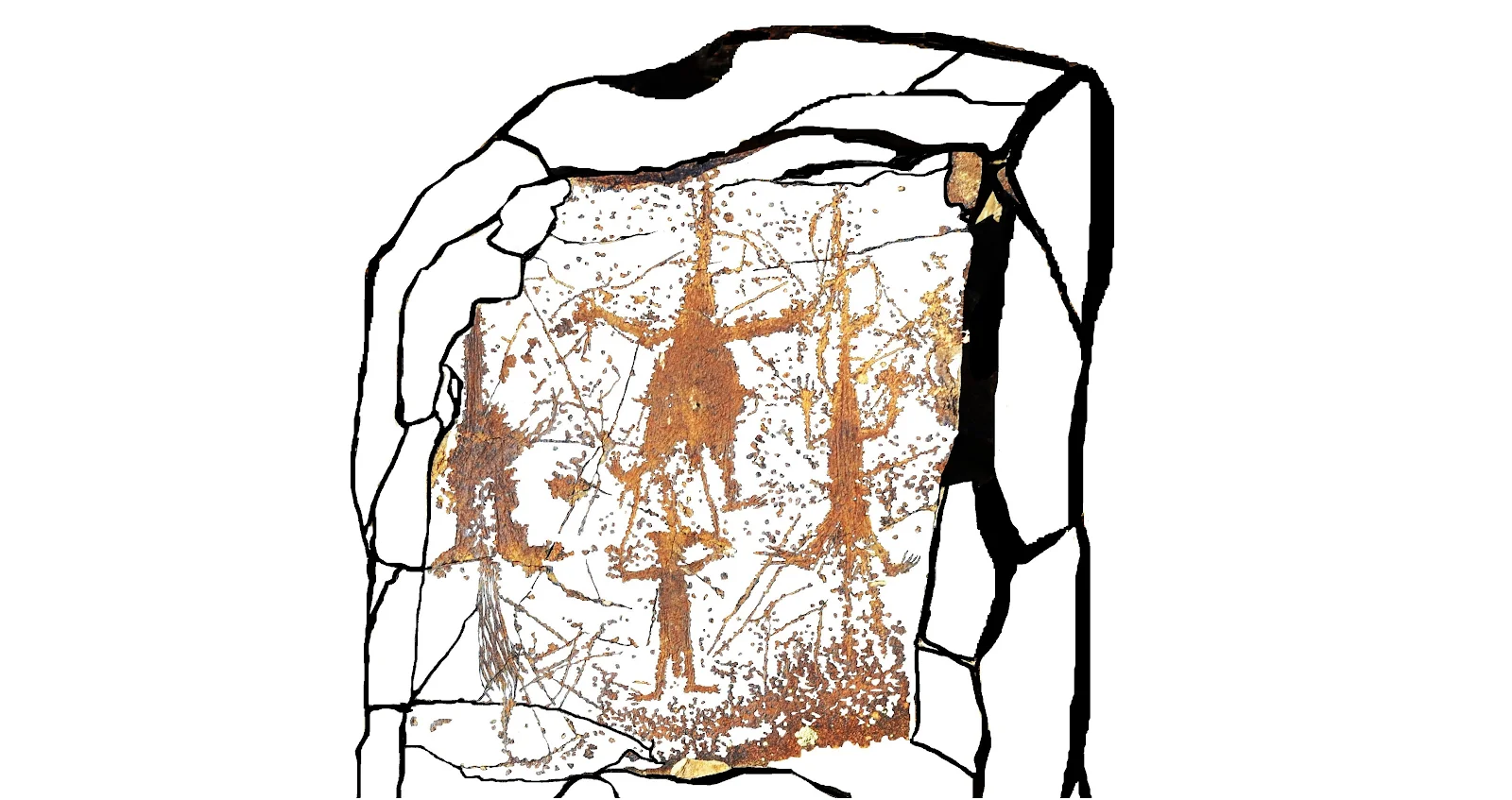Interpreting some rock art scenes, especially those of a religious nature, is a challenging task. After all, they appeared in prehistoric times, and scientists have very little reliable information about what specific rituals or mythological narratives might be reflected in them. However, experts often manage to reconstruct the spiritual preferences of the people who created these mysterious (from our perspective) pictures on the rocks.
This time, we will focus on a rarely encountered cultic scene that scholars refer to as the "pyramid of the clan" or the "pyramid of generations." According to researchers, these scenes convey the idea of the infinity of generations, and these images are closely related to the tribe's history and the ritual ceremonies or actions performed at clan sanctuaries.
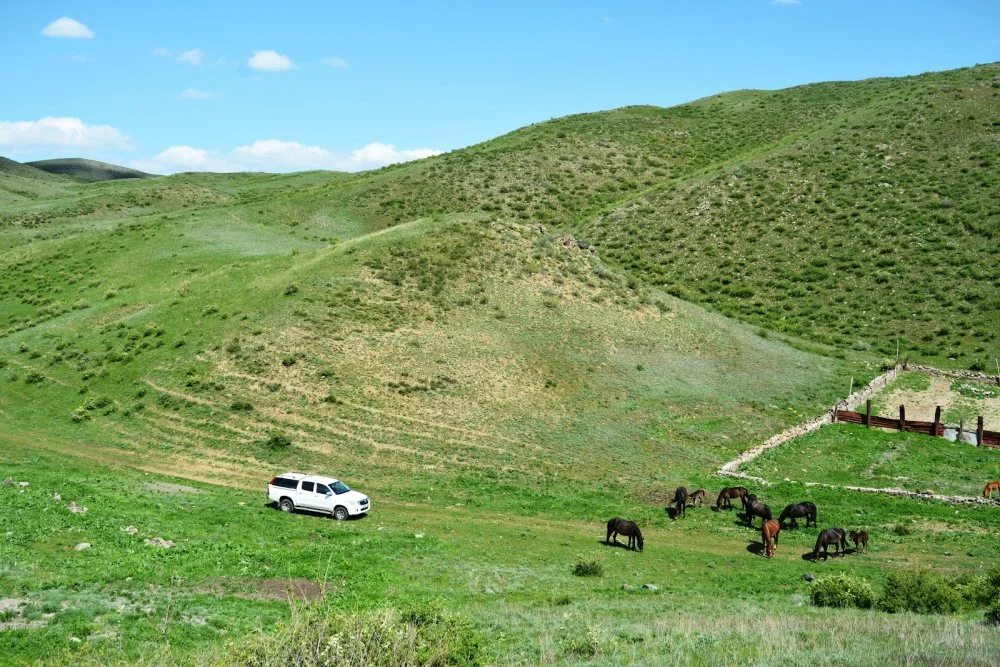
On the site of the ancient settlement there is a modern cattle pen/Olga Gumirova
One such scene was documented in 2019 during an expedition to the Arqarly Mountains in Jetisu by a group of scientific volunteers known as the "Petroglyph Hunters." It was later studied by specialists from the Margulan Institute of Archaeology, led by A. Goryachev.
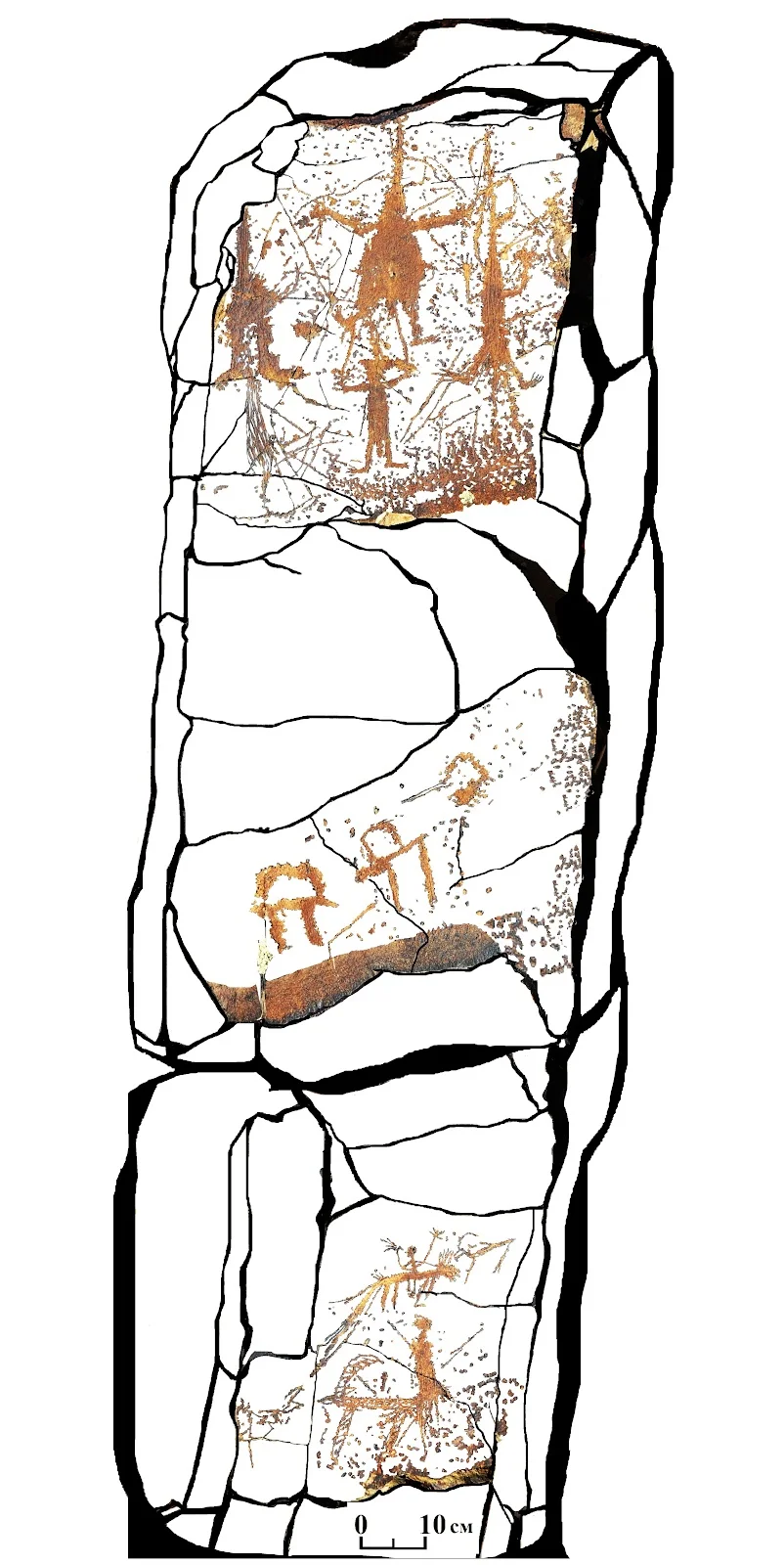
Pyramid of the clan. Group 21. Akharly. Drawing from the monograph/Olga Gumirova
Typically, in "clan pyramids," there is a main character —either in an anthropomorphic form or depicted as an animal. This figure is connected to the other figures by a clearly defined line or lines. This character is believed to represent the clan's founder or a mythical ancestor. In some cases, a totem animal is depicted - an aurochs, argali (wild sheep), camel, horse, or predator.
There are many scenes where the clan begins with a man or a male deity, but what makes the petroglyph from Arqarly unique is that the central figure in the "pyramid" is most likely a pregnant woman.
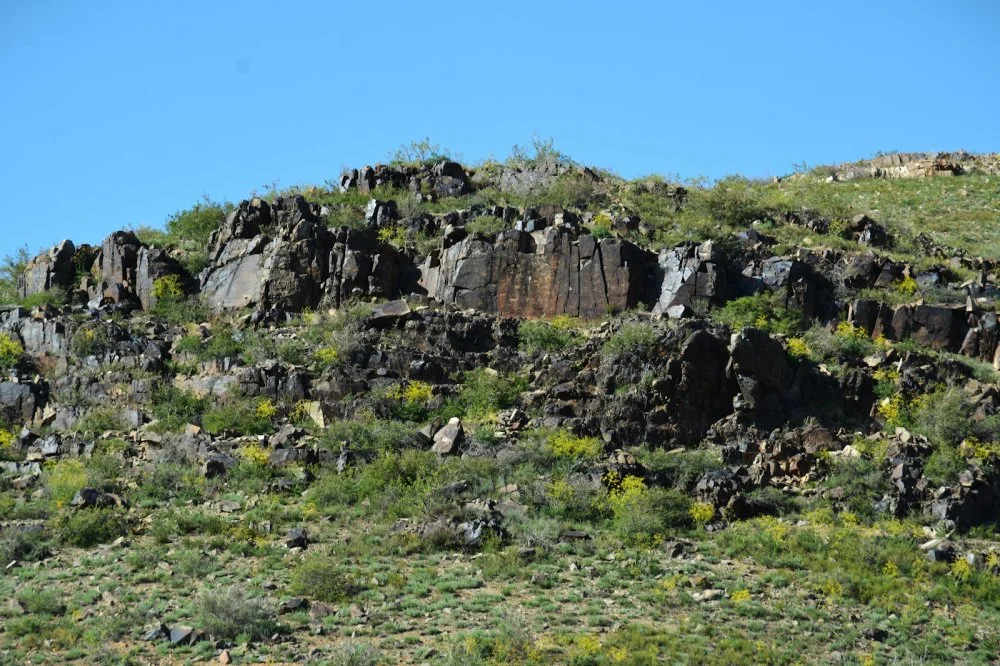
The wall of petroglyphs, next to which is the scene of the Pyramid of the Family/Olga Gumirova
The petroglyph was first created during the Bronze Age between 2000 and 700 BCE. Over time, the figures were repeatedly refreshed, and during one of the revisions, an anatomical change might have been introduced, allowing for the interpretation of the figure as male. However, judging by the figure’s form and the pronounced "pregnant" belly, it was originally a woman.
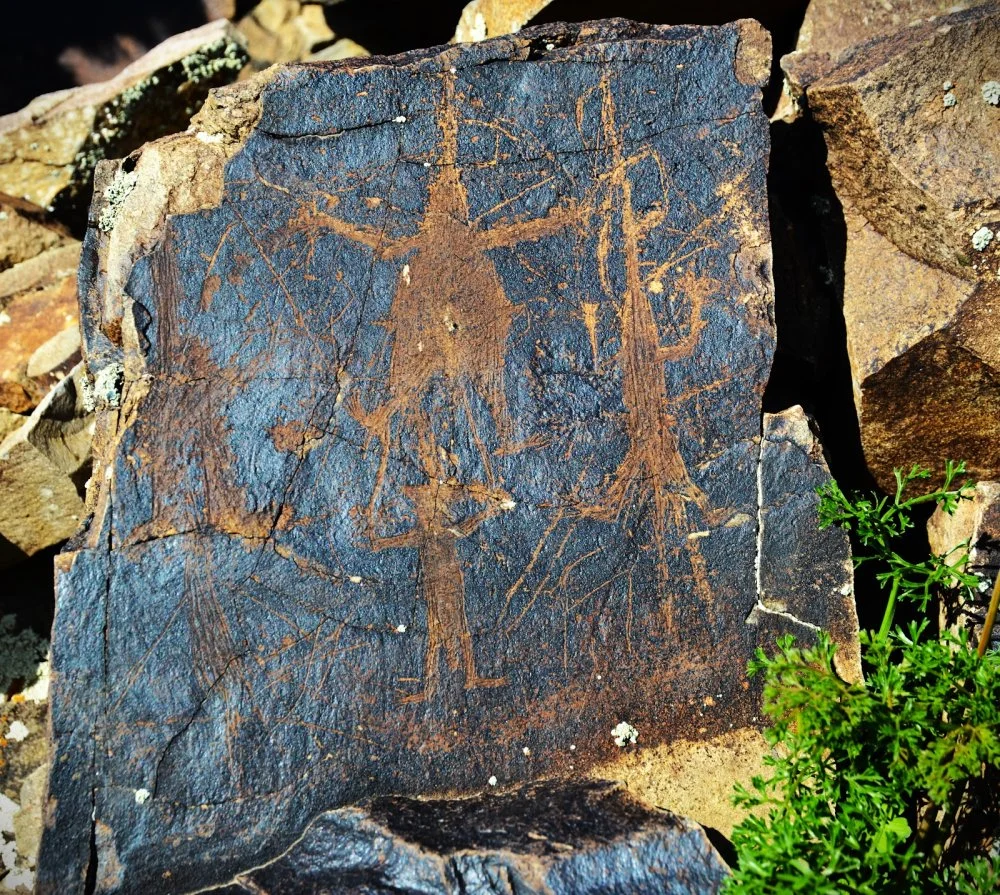
Pyramid of the clan from Arkarly/Olga Gumirova
The significance of this scene is emphasized by its location—directly adjacent to the central panel, the so-called "Petroglyph Wall." The hands of the main character are raised in a gesture of prayer or blessing, and numerous lines connect the palms to two anthropomorphic figures (one of which appears blurred due to later modifications). In turn, lines extend from these figures and the central character to a male anthropomorphic figure at the bottom of the scene, who is also connected by two lines to the symbolic womb of the mother-ancestor.

Petroglyph hunters at work/Olga Gumirova
As for who this "newborn" might have been—a hero of his time or a deity whose miraculous birth the ancient artists- shamans decided to immortalize in stone for millennia—we will likely never know. However, it is clear that this scene appeared long before the hagiographies *(writing on the life of a saint or martyr) of the saints that people now revere.

The sanctuary is so skillfully hidden in the hills that it is very difficult for an uninitiated person to find it/Olga Gumirova
P.S. This publication features a drawing from the monograph *Petroglyphs of the Arqarly Mountains. Materials and Research on the Archaeology of Kazakhstan, Volume XV*, 2023, Almaty. Authors: A.A. Goryachev, E.S. Kazizov, T.A. Yegorova, O.N. Gumirova.
